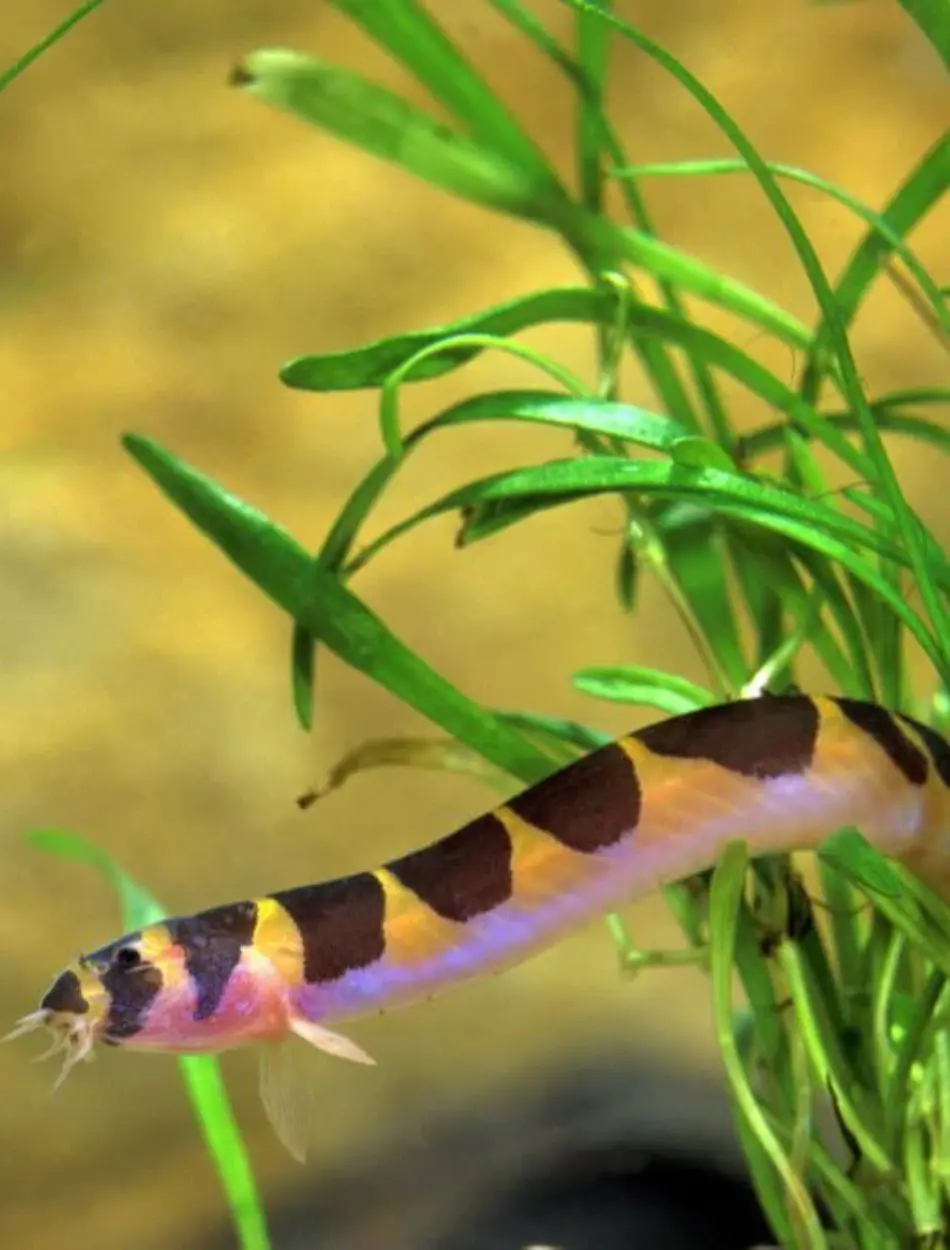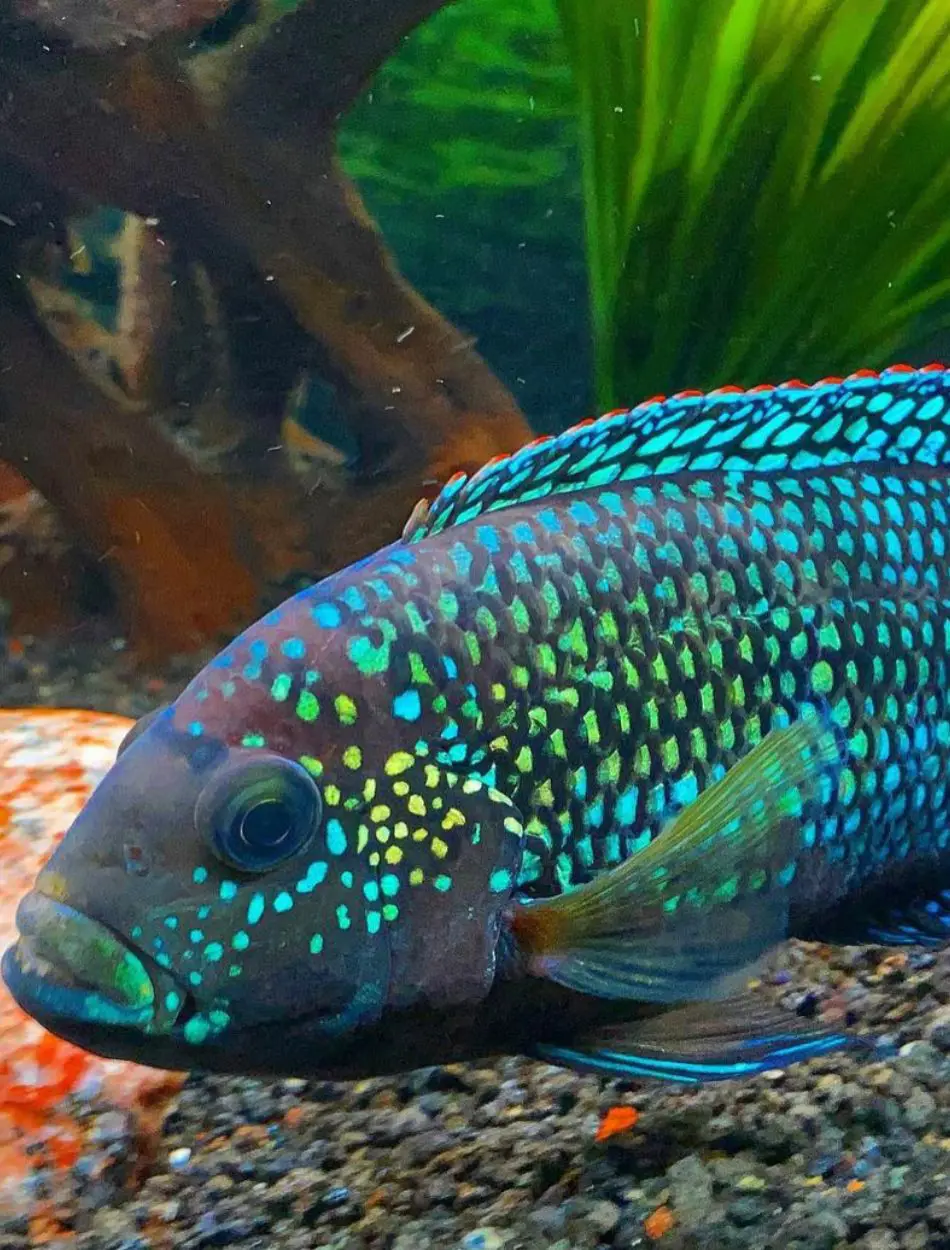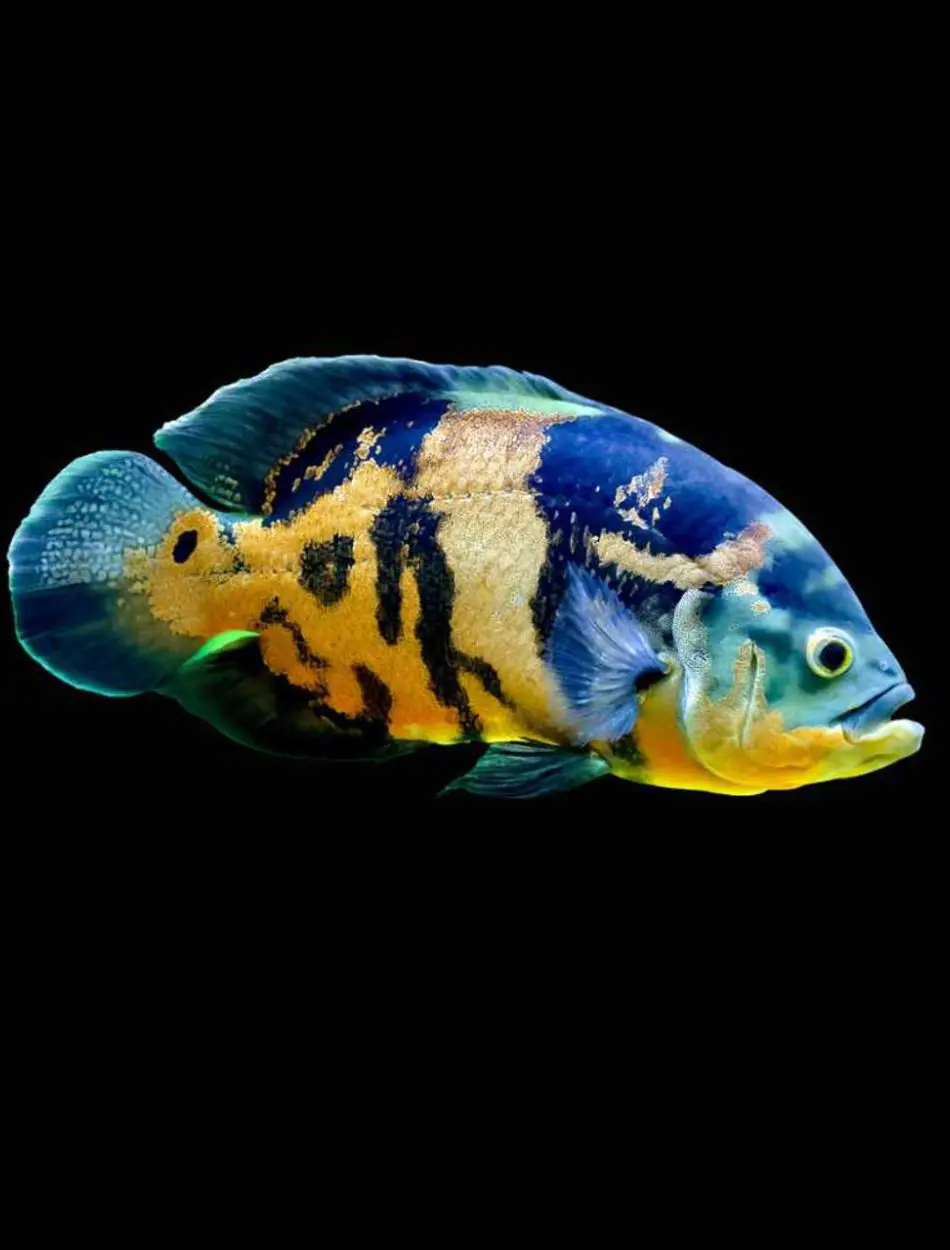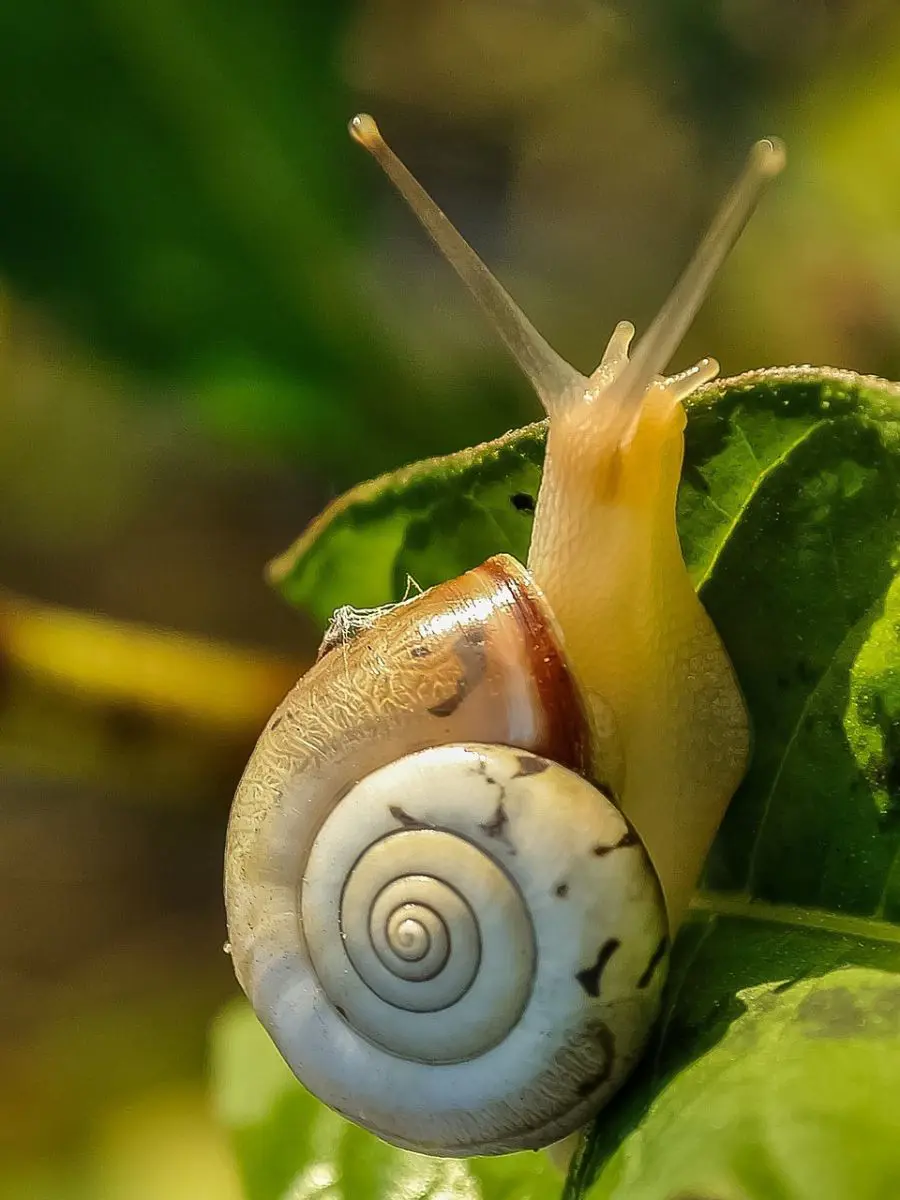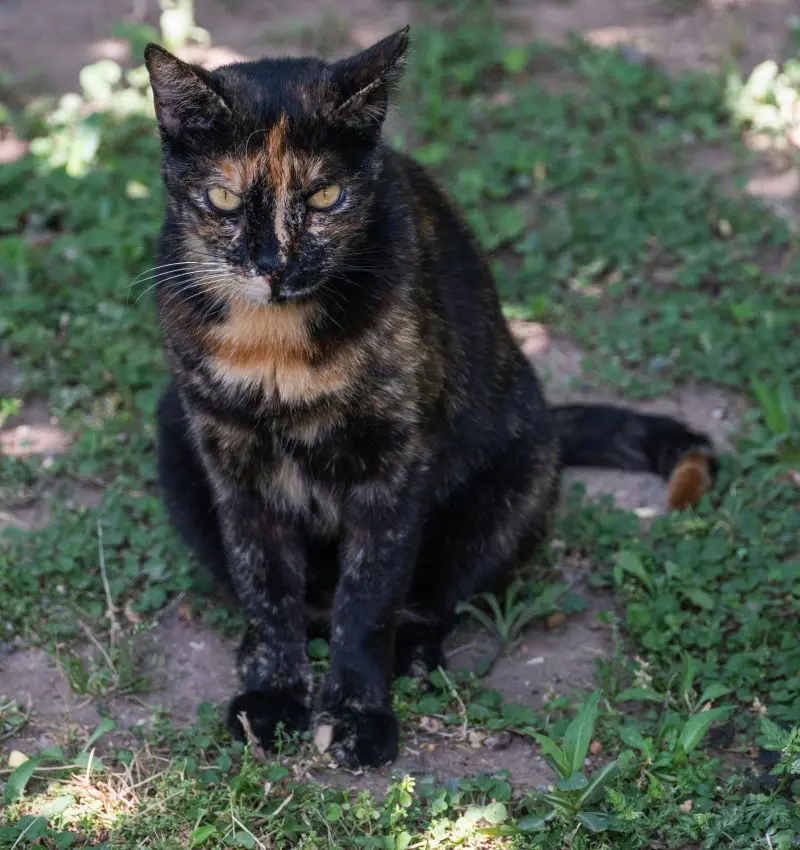What Do Fish Eat And Their Feeding Schedule
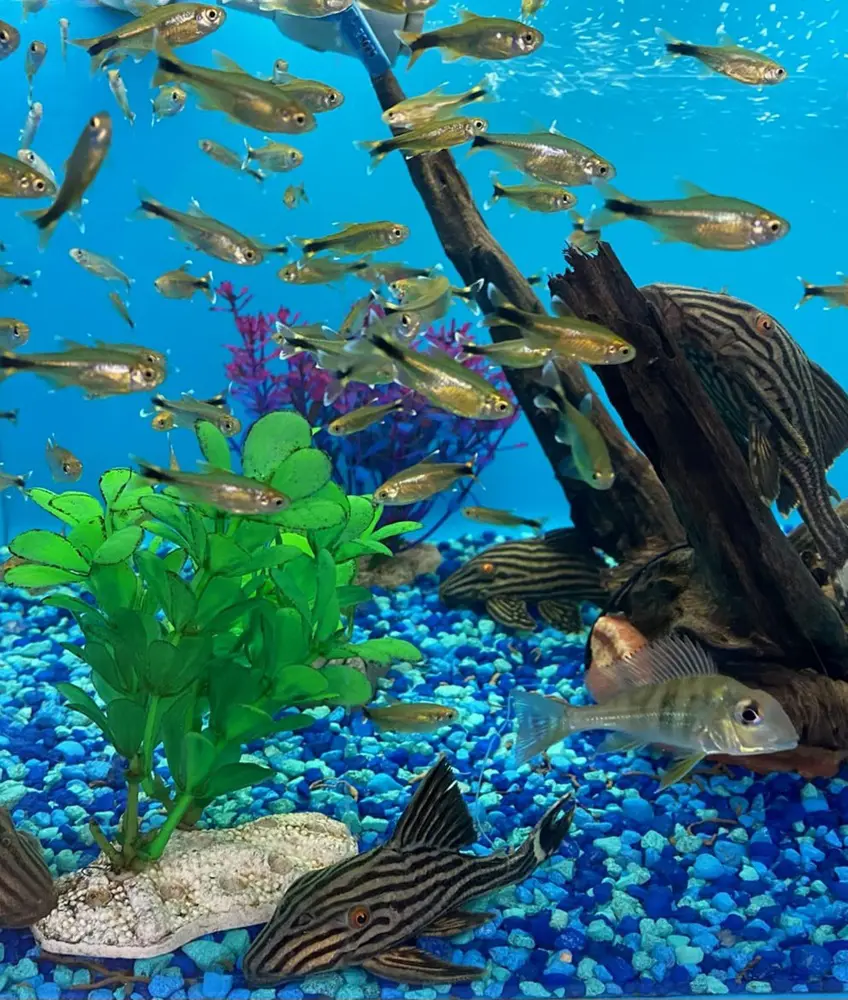
Fish don't follow a universal feeding trait; their diet and eating habits differ greatly based on their size, habitat, local vegetation and food sources, and more.
From flakes and pellets to vegetables, neither herbivorous nor omnivorous fish can survive on a single food. Instead, they depend on multiple foods that provide essential nutrients like protein, fatty acids, and vitamins.
Check out 10 foods you should consider feeding your pet fish:
1. Flakes
Fish flakes involves combining various ingredients to create a nutritionally balanced diet for aquarium fish. These ingredients often include fish meal, shrimp meal, grains, vegetable proteins, vitamins, and minerals. The mixture is processed into thin, dry flakes that are easily digestible for fish.
Flakes provide essential nutrients, vitamins, and minerals that help maintain the health of fish. They float on the water's surface, making them accessible to most fish species. While it serves as a delicious treat to some fish, not all species enjoy it. Some of the most common flake-loving species include:
- Tetras
- Guppies
- Mollies
- Platies
- Swordtails
- Danios, etc.
2. Pellets
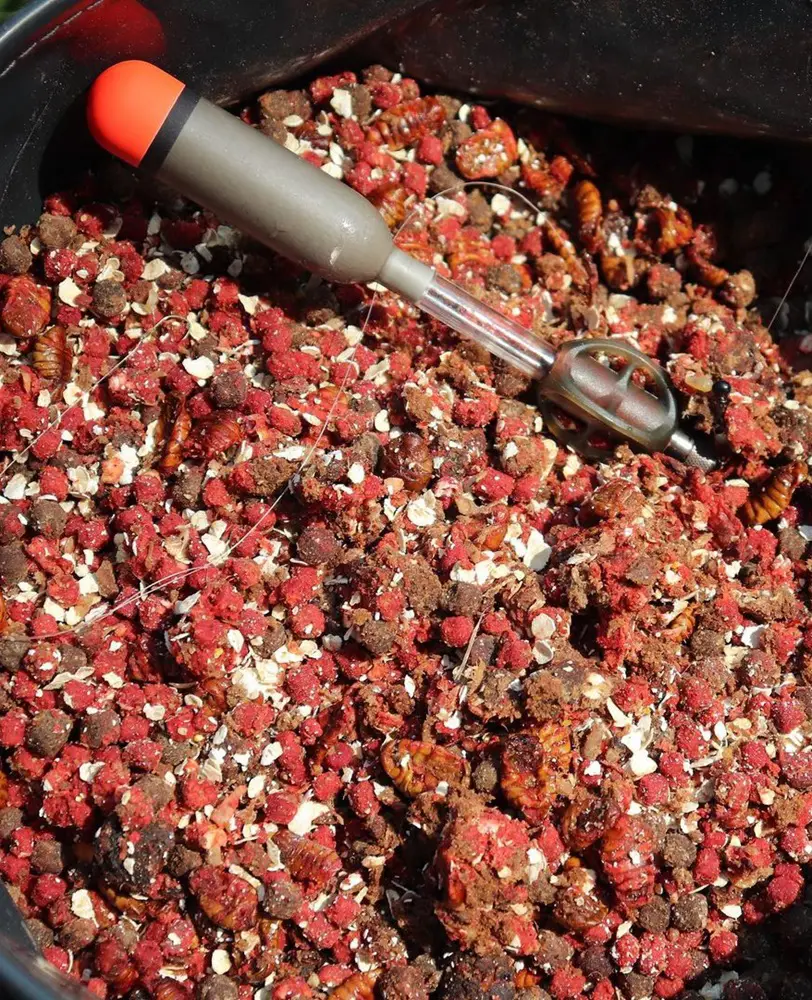
Pellets are designed to provide complete nutrition tailored to various fish types. However, pet owners should make sure that herbivorous, carnivorous, and omnivorous fish receive the necessary nutrients for their natural diet. Fish pellets are composed of multiple ingredients to meet the fish's protein requirement.
The balanced protein and fat content supports healthy growth, robust immune systems, and energy. High-quality pellets are also formulated for easy digestibility, minimizing waste and helping to maintain clean aquarium water. These are some fish species that mostly enjoy the taste of pellets.
- Cichlids
- Goldfish
- Bettas
- Koi
- Catfish
- Angelfish, etc.
3. Freeze-Dried Bloodworms
As a rich source of protein, freeze-dried bloodworms are excellent for growth and energy in fish. They also contain essential amino acids, vitamins, and minerals that contribute to overall health and vitality. Bloodworms mimic natural prey, which stimulates the natural hunting instincts of many fish.
Their vibrant red color and wiggly appearance make them highly appealing, attracting even the pickiest eaters.
Pros of Feeding Freeze-Dried Bloodworms:
- High Nutritional Value: Packed with protein and essential nutrients, they promote healthy growth.
- Convenience: Easy to store and have a long shelf life.
- Safe: Freeze-drying kills parasites and bacteria, reducing the risk of introducing diseases.
Cons of Feeding Freeze-Dried Bloodworms:
- Potential for Constipation: If not pre-soaked, they can expand in the fish’s stomach.
- Dietary Imbalance: Relying solely on bloodworms can lead to nutritional deficiencies; they should be part of a varied diet.
- Allergic Reactions: Some fish may have allergies to bloodworms, causing adverse reactions.
4. Brine Shrimp
Also known as sea monkey, brine shrimp should be gradually introduced to your fish's diet. Start by offering small amounts to gauge your fish’s interest and monitor how well they digest it. Brine shrimp can be provided in various forms, including live, frozen, or freeze-dried. Live brine shrimp can be more enticing as they stimulate the natural hunting instincts of fish. However, frozen and freeze-dried options are also nutritious and convenient. Gradually increasing the amount over time allows your fish to adapt.
While brine shrimp are generally safe and beneficial, there are potential side effects to consider. Feeding too many of these can lead to an imbalanced diet. Additionally, live brine shrimp can introduce parasites or bacteria into the aquarium, so it's crucial to source them from a reputable supplier.
5. Daphnia
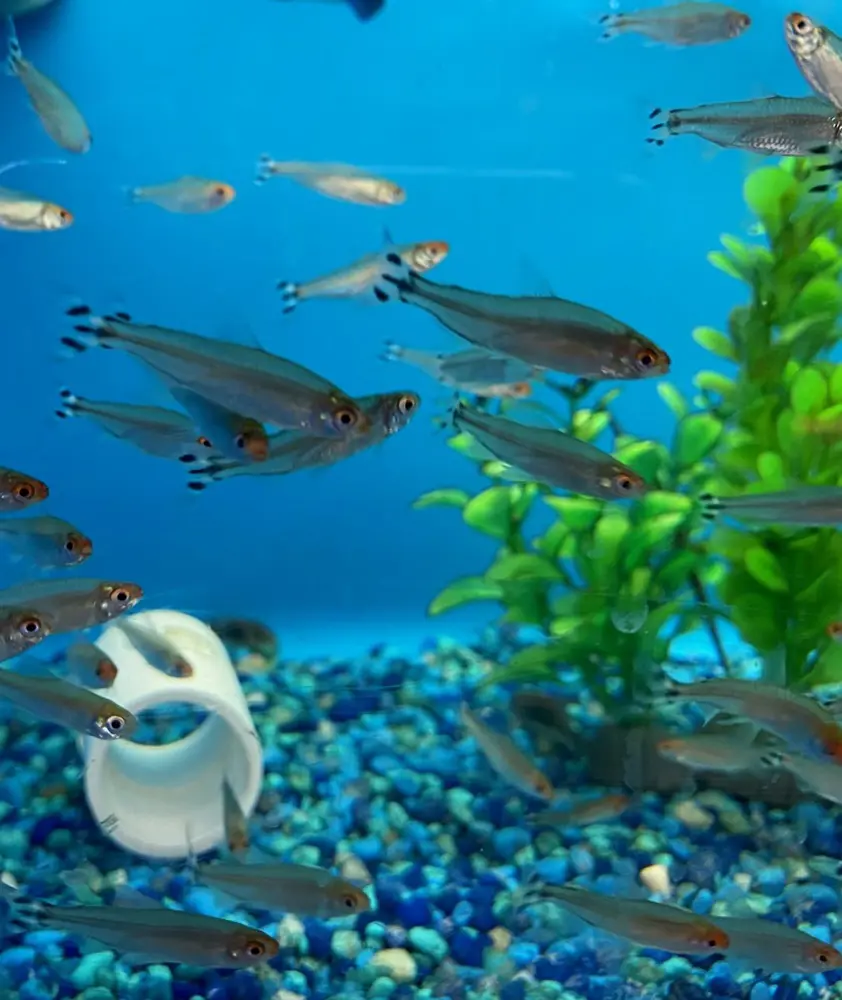
Commonly known as water fleas, are small planktonic crustaceans that make an excellent addition to a fish’s diet. Rich in protein, vitamins, and minerals, daphnia provide a natural and nutritious food source that promotes healthy growth and development. Their high fiber content aids in digestion and can help prevent constipation in fish.
Daphnia's small size and natural movement in the water make them an appealing choice, particularly for smaller fish or fry, as they can easily consume them. Additionally, daphnia are available in various forms, including live, frozen, and freeze-dried, allowing for flexibility in feeding options. Incorporating daphnia into a fish’s diet helps stimulate natural feeding behavior and offers variety, ensuring a well-rounded and balanced diet.
6. Krill
Krill consists of two different major varieties: Antarctic krill (Euphausia superba) and Pacific krill (Euphausia pacifica). Both types are suitable for a wide variety of fish species, including freshwater and saltwater fish. They can also be fed to both carnivorous and omnivorous species.
Fishes like bettas, cichlids, and marine species like clownfish and tangs are its primary predators in nature. Their high protein content, omega-fatty acids, and abundance of vitamins make the tiny species an attractive meal among many aquatic animals. Similarly, krill’s natural pigments, such as astaxanthin, further enhance coloration and improve vision.
7. Tubifex Worms
Commonly known as sludge worms, tubifex worms are small, segmented worms found in various freshwater habitats. They are known for inhabiting muddy or decaying environments, which makes them an abundant natural food source for many fish species. In aquariums, these worms are often used as a high-protein food to support the growth and health of both freshwater and saltwater fish.
Tubifex worms should be given in moderation, typically no more than once or twice a week. Overfeeding can lead to water quality issues and digestive problems in fish.
8. Algae Wafers

Algae wafers are compact, disk-shaped food items specifically formulated for herbivorous and omnivorous aquatic species. They are made by combining different types of algae with various plant-based ingredients and binders. The mixture is then compressed and shaped into disks, designed to sink to the bottom of the tank.
Algae wafers are safe for fish as they are crafted to be easily digestible and nutritionally balanced. They are an excellent dietary choice for species like plecos, otocinclus, and certain types of catfish. In addition to fish, algae wafers are also suitable for other aquatic creatures, such as snails and shrimp.
However, it is important to note that algae wafers should only be fed in moderation. Providing only what can be consumed within a few hours helps prevent excess waste and maintains good water quality
9. Spirulina
Spirulina is a blue-green algae found in both freshwater and marine environments. It is known for its high nutritional value and is used as a dietary supplement for both humans and animals, including fish. The algae are cultivated in large open ponds or closed bioreactors. Once harvested, it is dried and processed into various forms, such as powders, flakes, or pellets, making it easy to include in fish food.
Feeding spirulina to fish offers numerous benefits. It has an abundance of essential amino acids, vitamins, and minerals that support fish health and growth. Spirulina also contains antioxidants and carotenoids that enhance the color of the fish.
10. Vegetables
Fish enjoy a variety of vegetables, including peas, spinach, zucchini, lettuce, cucumber, and carrots. These vegetables are easy to prepare and can be served in small, bite-sized pieces. Peas are particularly popular because they help with digestion and prevent swim bladder issues.
The amount of vegetables you should feed your fish depends on their size, species, and dietary needs. Generally, vegetables should supplement their regular diet and should not exceed 20-30% of their total food intake. It’s best to offer small portions, about the size of the fish’s eye, once or twice a week.
Pet Fish Specialty Diet
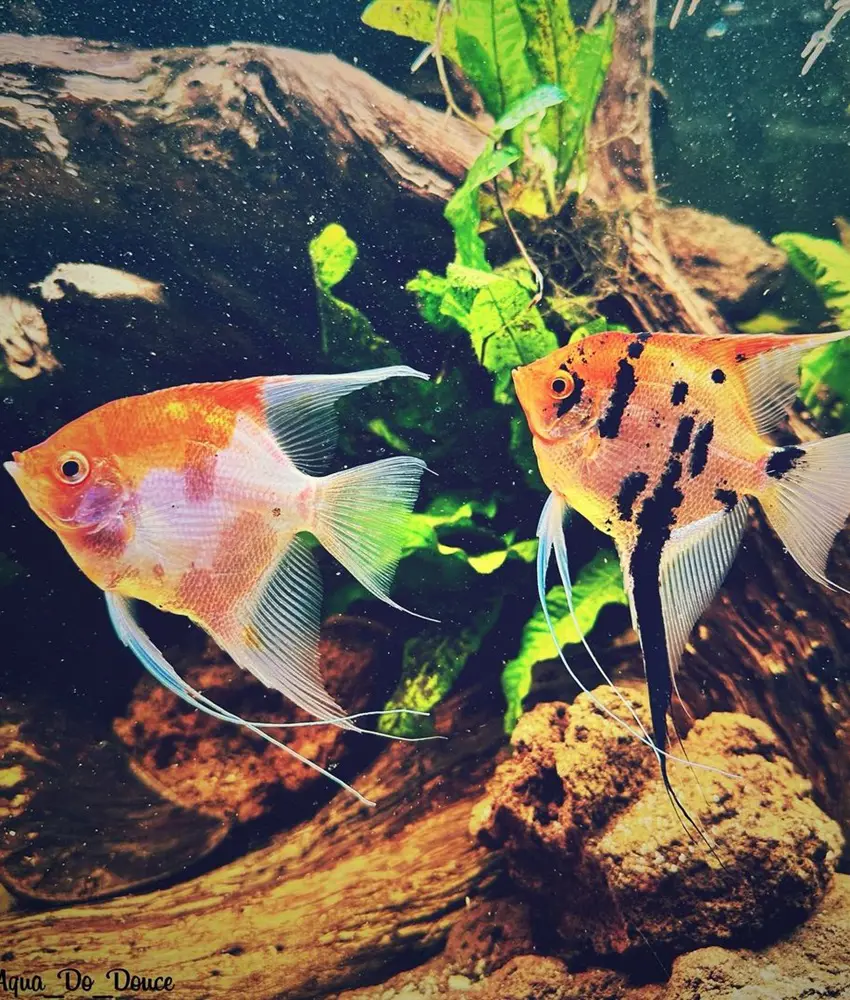
A specialty diet for a fish simply means a tailored feeding plan that meets the specific nutritional requirements of a particular species. This diet accounts for the fish's natural feeding habits, preferred types of food, and any special dietary needs.
Specialty diets help to provide a thriving lifestyle to fish by replicating their natural diet as closely as possible.
1. Goldfish
Goldfish require a diet that is low in protein and high in carbohydrates. This helps prevent issues with their digestive systems and swim bladder disorders.
Specialty diets for goldfish typically include high-quality flake or pellet food specifically formulated for their needs. These foods contain the right balance of nutrients, including essential vitamins and minerals.
In addition to commercial goldfish food, goldfish can benefit from the occasional feeding of blanched peas, lettuce, and spinach. Avoid overfeeding as goldfish are prone to obesity and water quality issues.
2. Betta Fish
Also called Siamese fighting fish, betta fish are carnivorous and require a high-protein diet. Feed them betta-specific pellets or flakes that are rich in protein. These foods are formulated to float, making them ideal for bettas that naturally feed at the water’s surface.
Additionally, bettas have small stomachs, so it's important to feed them small amounts two to three times a day to prevent bloating and other digestive issues.
3. African Cichlids
Supplementing an African Cichlid's diet with ith live or frozen foods like brine shrimp or bloodworms can help mimic their natural diet and stimulate their feeding behavior. Some cichlids are herbivores or omnivores, so incorporating vegetables such as spinach, zucchini, or spirulina-based foods is beneficial.
Meanwhile, a custom cichlid diet includes pellets or flakes that are specifically formulated to meet their nutritional requirements.
4. Discus Fish
Discus fish are known for their unique dietary needs and delicate digestive systems. They require a varied diet high in protein and rich in essential nutrients.
Besides commercial food, these fish also benefit from live or frozen foods such as bloodworms, brine shrimp, and beef heart. These foods provide the protein and variety they need for optimal health.
Feeding should be done several times a day in small amounts, and uneaten food should be promptly removed to maintain pristine water conditions.
5. Plecostomus
Plecostomus, or plecos, are primarily herbivorous. They prefer a diet consisting primarily of algae wafers or tablets that sink to the bottom of the tank. You can also feed blanched vegetables such as zucchini, cucumber, and spinach. These vegetables should be anchored or weighed down to allow plecos easy access.
Plecos also help keep the tank clean by consuming algae. However, they also need enough supplemental food to meet their nutritional needs.
Pet Fish Feeding Schedule
Maintaining a proper feeding schedule is crucial to avoid overfeeding your beloved fish and get them accustomed to a routine. Normally, feeding patterns depend on the size and feeding habits of the specific species.
Even fish from the same aquarium can have hugely different food requirements. Hence, you should always consider feeding your pet fish individually and not as a collective.
Small Fish (Under 5 Grams)
Species: Neon Tetras, Guppies, Zebra Danios
Feeding Schedule: Small fish should be fed 1-2 times daily.
Serving Size: Provide a small pinch of flake food or a few pellets, enough for them to consume within 2-3 minutes. For live or frozen foods, offer a small portion, such as 5-10 brine shrimp or bloodworms.
Medium Fish (5-50 Grams)
Species: Mollies Swordtails, Angelfish
Feeding Schedule: Feed medium fish 1-2 times daily.
Serving Size: Offer a pinch of flakes or a few pellets, adjusted to their size. For live or frozen foods, give about 10-20 brine shrimp or bloodworms.
Adjust the amount based on the number of fish in the tank. Medium-sized fish have larger appetites but can still suffer from overfeeding.
Large Fish (50-200 Grams)
Species: Oscars, African Cichlids, Goldfish
Feeding Schedule: Feed large fish 1-2 times daily, depending on their activity level and species.
Serving Size: Provide several pellets or a larger amount of flake food. For live or frozen foods, offer approximately 20-30 brine shrimp or bloodworms. Adjust the serving size based on the fish’s size and appetite.
Extra Large Fish (Over 200 Grams)
Species: Koi, Arowanas, Large Plecos
Feeding Schedule: Feed extra-large fish 1-2 times daily.
Serving Size: Offer larger portions, such as a handful of pellets or a significant amount of flake food. For live or frozen foods, provide larger items like earthworms or chunks of fish.
Carefully monitor their diet to avoid waste and maintain a clean tank. Adjust the portions based on their individual needs and tank conditions.
General Tips for All Sizes:
- Always observe your fish during feeding to make sure they are consuming the food and adjust serving sizes accordingly.
- Remove any uneaten food after 5-10 minutes to prevent water pollution.
- Include a mix of commercial, live, and frozen foods for a balanced diet.
Recent posts
Fish
Why Is My Fish Tank Cloudy?
Cloudy fish tanks can be frustrating for any aquarium owner. Especially if one has put in the necessary effort to accomplish a beautiful underwater setting. Whether you are an inexperienced aquarium holder or one of the pros, cloudy water may be the ...
20 Long Freshwater Fish For Aquarium
Having a range of long, gorgeous fish in your freshwater aquarium can make it an immensely fulfilling experience. Choosing the right fish is the first step to an exciting freshwater aquarium, and long freshwater fish are among the best options. ...
17 Cichlid Tank Mates For Your Aquarium
Cichlids are one of the diverse and captivating freshwater fish that are known for their vibrant colors. They are found in tropical America, mainland Africa, Madagascar, and southern Asia. These freshwater fish have elongated streamlined bodies...
20 Aggressive Fish Tank Species
When setting up an aquarium, the right choice of fish species is indispensable since some fish have aggressive natures, which could breed conflict in a community tank. These fish are known to be territorial and most of them require special care ...
Ramshorn Snails Care Guide And Tank Mates
Ramshorn snails, familiar to the family Planorbidae, are an absorbing group of freshwater gastropods. They thrive in a variety of environments from clean to moderately polluted waters. Despite being considered a pest snail by many, the ramshorn...
Scarlet Badis Fish Profile And Tank Mates
Scarlet Badis are among the most fascinating and rewarding species to keep in a home aquarium. Especially for the aquarists who will go the extra mile to suit their needs regarding proper care and raising. In terms of their bright coloring, intriguin...

